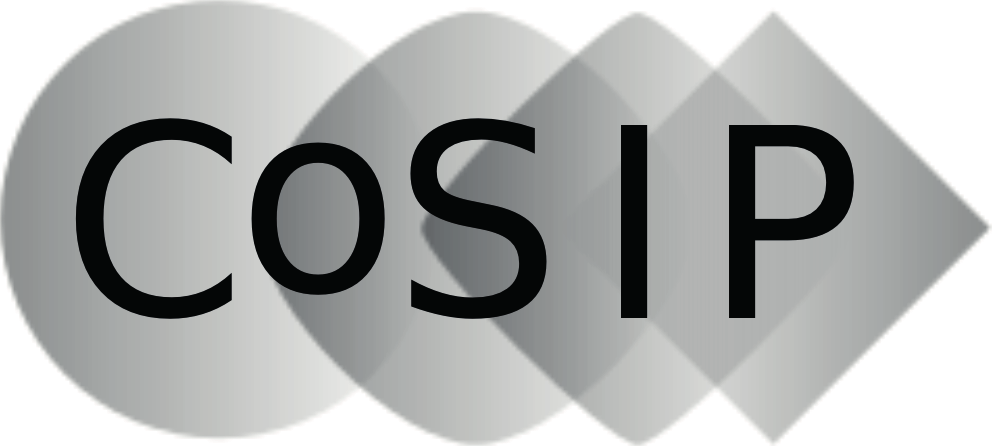Compressed Sensing Algorithms for Structured Massive MIMO
Compressed Sensing Algorithmen für große, strukturierte MIMO-Systeme
- Professor Giuseppe Caire, Ph.D.
Technische Universität Berlin
Fakultät IV - Elektrotechnik und Informatik
Institut für Telekommunikationssysteme
- Professor Dr. Gitta Kutyniok
Technische Universität Berlin
Institut für Mathematik
- Privatdozent Dr.-Ing. Gerhard Wunder
Technische Universität Berlin
Heinrich-Hertz-Lehrstuhl für Informationstheorie und theoretische Informationstechnik
Zusammenfassung
Massive MIMO wird als Schlüsseltechnologie für zukünftige Anforderungen an die Mobilfunknetze betrachtet, üblicherweise heute als 5G bezeichnet: Die Idee ist durch massive Erhöhung der Antennenzahl auf der Infrastrukturseite den zufälligen Einfluss des Mobilfunkkanals quasi zu kompensieren, um so ein effektives Interferenzmanagement zu ermöglichen. Während ein gutes Verständnis für das Systemdesign bereits vorliegt, führt eine naive Implementierung für hunderte Antennen mit Hilfe von skalierten Standardalgorithmen nicht zu einem realistischen System, da die Komplexität der Algorithmen schnell die Leistungsfähigkeit heutiger Systeme übersteigt. In diesem Projekt wird an dieser Stelle angesetzt und ein neuer strukturierter Ansatz für eine effiziente Implementierung von Massive MIMO mit Hilfe der zeitlichen und räumlichen Feinstruktur der drahtlosen Kanäle verfolgt. Hierzu wird ausgenutzt, dass die Signale räumlich korreliert sind und mit Hilfe der Karhunen-Loeve Transformation durch eine Sparse Basis repräsentiert werden können. Diese Eigenschaft kann nun mit Sparse Signal Processing Algorithmen adressiert, und für eine realistische Implementierung mit neuen, effizienten Empfängerarchitekturen zur drastischen Dimensionsreduktion genutzt werden. Eine zentrale Fragestellung ist dabei die Analyse und Synthese universeller Basen zur Repräsentation der räumlichen, und auch zeitlichen Struktur der Kanäle. Darüber hinaus sind Fragestellungen zur stabilen Rekonstruktion der Signale unter Berücksichtigung beschränkter Freiheitsgrade, der unterliegenden kontinuierlichen und diskreten Modelle, und der inhärenten Tradeoffs zur Performance, Komplexität, Auflösung von fundamentaler Bedeutung. Des Weiteren kann der gewählte Ansatz auch für die Implementierung von FDD Massive MIMO genutzt werden. Dieser Systemansatz ist für praktische Systeme ungemein bedeutend und soll im Projekt umfassend bearbeitet und eine Systemlösung abgeleitet werden. Die Bearbeitung des Projektes umfasst Expertise aus Kommunikationstheorie, Informationstheorie sowie Signalverarbeitung und Mathematik. Jeweils zwei PIs vom EECS Department und ein PI vom Mathematik Department sind in das Projekt involviert. Zwei Doktoranden sowie zwei studentische Mitarbeiter werden im Projekt von den PI
Summary
Massive MIMO, i.e., very large scale multiuser multi-antenna technology, is widely expected to play a fundamental role in meeting the target performance oft he future generation of wireless/cellular networks, commonly indicated as 5G. The key idea is that by scaling up the number of jointly processed antennas at the infrastructure side (i.e., in the base stations), the wireless channel, notoriously affected by random propagation effects, converges to a deterministic limit in which the network behaves in a predictable and very desirable manner, where intra-cell multiuser interference can be nulled by precoding, and intra-cell interference can be easily controlled. Massive MIMO has been widely analyzed under simple independent and identically distributed channel statistics, and under the naive assumption that the precoding/beamforming operations can be implemented by standard baseband signal processing (fully digital domain). However, a major obstacle in the implementation of Massive MIMO is represented by the very high complexity of the signal acquisition, requiring to demodulate and sample the output of hundreds of antennas. In this project, we propose to exploit the fine structure oft he wireless scattering channel in the asymptotic regime of a large number of antennas, in order to develop a low-complexity structured approach to Massive MIMO. The key observation is that the channel (random) vectors are spatially correlated, and therefore they are sparse in the domain of their Karhunen-Loeve basis. Hence, ideas and techniques from sparse signal processing (sensing and reconstruction) become instrumental to devise new tranceivers architectures, which eventually make Massive MIMO implementable in practice. The central questions that we propose to investigate include: finding universal sparsifying bases or frames to represent general channel spatial correlations; consider wideband channels with sparsity in both the angular and delay domain; understand the tradeoffs and the methods of treating sparsity in the continuous rather than in the discretized domain; understanding the tradeoff, in terms of stable reconstruction of sampling rate versus quantization resolution; consider sparse signal separation in multiuser environments with multiple sparse interferers in the angle-delay and time domain; developing dimensionality reduction techniques that make Massive MIMO affordable also for Frequency-Division Duplexing systems. The proposed research spans across Communications, Information Theory, Signal Processing and Mathematics. The PI team is highly qualified, involving two PIs in the EECS Department and one PI in the Mathematics Department of TU-Berlin. Two PhD students (full time) and two MS/BS students (part-time) will be jointly supervised and collaborate in the research project.
Preprints
Saeid Haghighatshoar, Giuseppe Caire, An Active-Sensing Approach to Channel Vector Subspace Estimation in mm-Wave Massive MIMO Systems, November 2015.
Saeid Haghighatshoar, Giuseppe Caire, Channel Vector Subspace Estimation from Low-Dimensional Projections, July 2016
Saeid Haghighatshoar, Giuseppe Caire, Low-Complexity Massive MIMO Subspace Estimation and Tracking from Low-Dimensional Projections, August 2016.
Axel Flinth, Soft Recovery Through ℓ1, 2 Minimization with Applications in Recovery of Simultaneously Sparse and Low-Rank Matrices, September 2016.
Axel Flinth, Sparse Blind Deconvolution and Demixing through ℓ1, 2-minimization, September 2016
Publications
Saeid Haghighatshoar, Giuseppe Caire, Channel Vector Subspace Estimation from Sample Covariance of Low-Dimensional Projections, International Zurich Seminar on Communications, March, 2016.
Saeid Hahighatshoar, Giuseppe Caire, Enhancing the Estimation of mm-Wave Large Array Channels by Exploiting Spatio-Temporal Correlation and Sparse Scattering, 20th International ITG Workshop on Smart Antennas (WSA 2016), March, 2016.

